Fiberglass plaster mesh: pros and cons
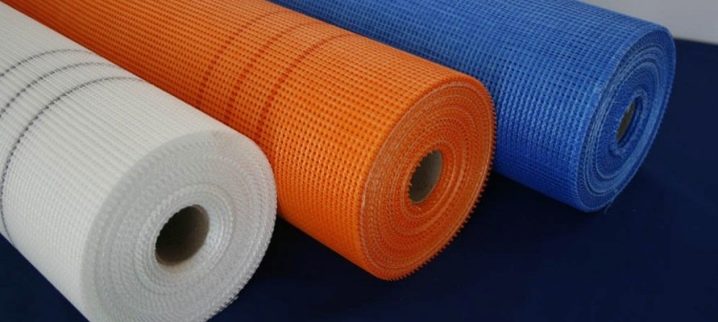
For the exterior and interior decoration of buildings, "wet" methods are currently used, for example, putty and plaster. These manipulations can be carried out both on the walls and on the ceilings of the premises. Reinforcement is an indispensable part of such methods. It is with him that fiberglass mesh is used.
When construction is at its final stage, it is time for finishing work. Their task is not just to improve the structure, but also to give additional strength to the main structures and to protect them from external influences. Plaster fiberglass mesh is an irreplaceable assistant in solving such problems.
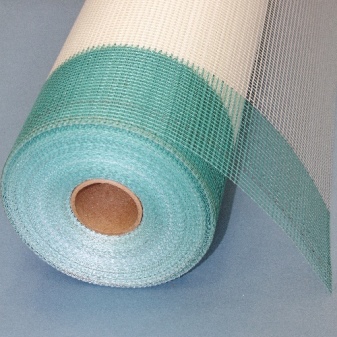
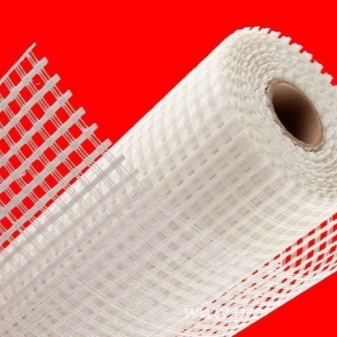
Currently, this coating is quite popular. What can happen if it is absent? If the topcoat is applied directly to walls and ceilings, bypassing the mesh, these surfaces will crack over time. In this case, the coating itself simply disappears.
That is why it is so important to use the plaster mesh, which will bear the main load, as the basis for the finishing material. In addition, the adhesion of the plaster to the required surface will become stronger.
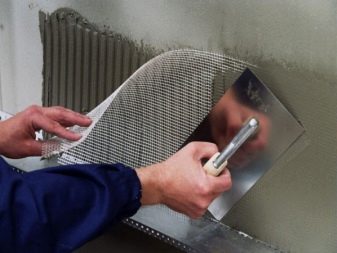
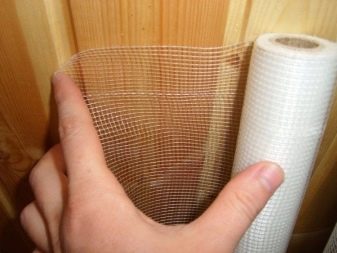
Composition
The fiberglass network is made of aluminoborosilicate glass. During the production process, neat threads are drawn with good flexibility and strength. The threads do not break, so small bundles are formed from them, from which the networks are woven.
The cells in these grids can be of any size. The most commonly used materials are 2x2 mm, 5x5 mm and 10x10 mm. The rolls are usually 1 meter wide, and the length can vary up to 100 meters.
To avoid problems with corners and joints, various reinforcing elements can be added to the base material.
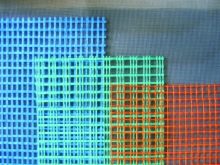
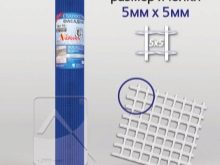
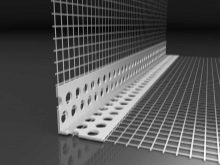
Views
In order to choose the material necessary for the work, you must have an idea of its characteristics. The main importance is the density, type of impregnation and the area for which a particular type of product is intended to work.
It is the size of the surface density that gives an idea of the strength and reliability of the mesh. There are three types:
- Plastering and painting products with a density of 50 to 160 g / sq. m are used for interior work. Plasters have a higher density and a larger cell size.
- When puttying facades and other outdoor work, meshes of a higher density are used - up to 220 g / sq. m. - with a mesh size from 5x5 mm to 10x10 mm.
- But when working with basements of buildings and underground structures, the densest mesh should be used - up to 300 g / sq. m. Such materials can withstand severe loads, humidity, temperature drops and other adverse conditions.
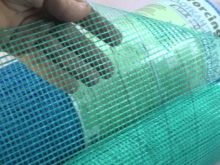
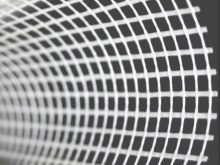
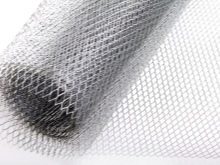
The higher the density, the higher the cost of the product will be. This is due to the fact that the consumption of material in production increases.
To facilitate the selection of a material with a certain strength and properties, each product is marked. For example, the marking "CC" indicates that the mesh is glass; "H" and "B" warns that it should be used for outdoor and indoor work, respectively; the letter "A" denotes anti-vandal reinforcing products used in work with underground and basement structures, "U" - reinforced and other.
It will not be superfluous to ask the seller and check the conformity documents for the mesh if you have not heard anything about the manufacturer or have doubts about its properties.
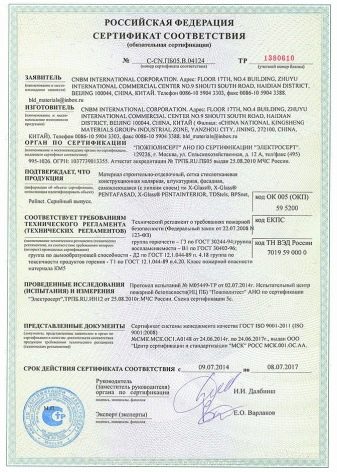
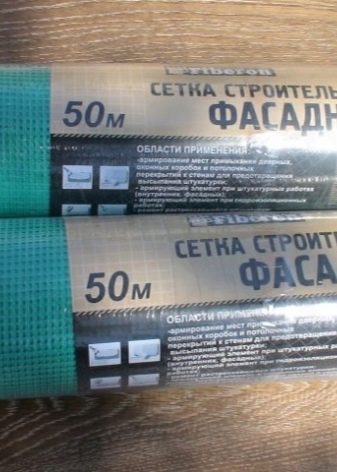
Mounting
Installation of fiberglass mesh does not cause any particular difficulties.
A primer is applied to an even and cleaned surface. After that, a glue is prepared, which is applied to the primer in a thin layer. The plaster mesh is pressed into the interior of the finish layer and left to dry completely. Then the primer is applied again and the final layer of putty is applied.
The fixation of the fiberglass mesh with self-tapping screws and other metal products is highly undesirable. Their use can lead to the appearance of rust when exposed to external conditions, respectively, the appearance of the finish can be damaged.
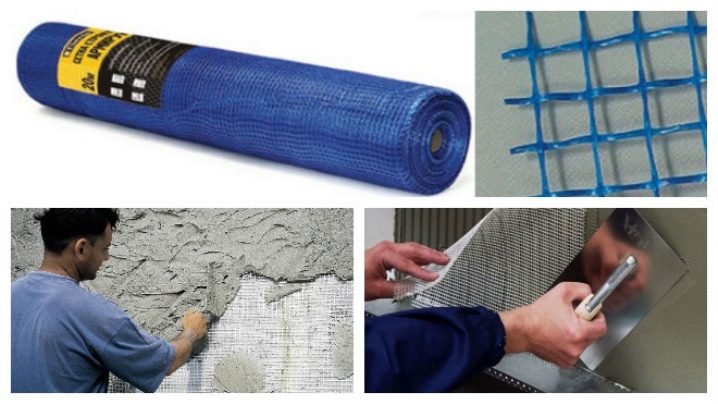
Advantages and disadvantages
Fiberglass mesh can replace metallic materials. It has a good effect on the strength of structures, relieves the finished finish from the appearance of possible cracks and extends the service life.
If you do not use additional metal elements, the appearance of corrosive phenomena is excluded. It is resistant to the action of chemical solutions, therefore, over time, rust does not appear on the finish.
The materials are lightweight, as a result of which they are often used for ceiling decoration.
The mesh is resistant to temperature changes, therefore it can be used both for external and internal finishing of buildings.
Fiberglass threads are flexible enough that they can be used when working with not too flat surfaces.
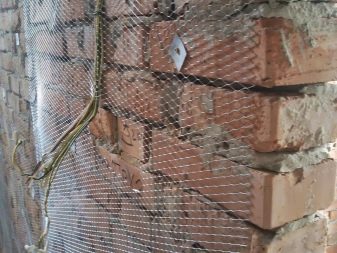
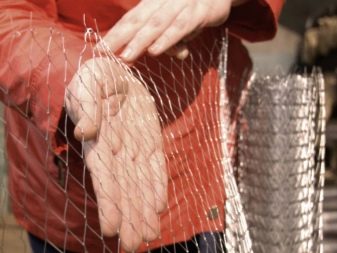
Installation of materials is straightforward, so you can do it yourself. With the right approach to the order of work, the finishing will last for a long time.
When decorating the first floors of buildings, it is preferable to use metal nets, which are most resistant to external influences.
One challenge with this product is that it can be difficult for the installer to do the job alone. When working with a ceiling, it is necessary to exclude the possibility of sagging, since in the future this can turn into a problem. Therefore, it is much more convenient to work together, so that one is engaged in stretching, and the other is in fixing the material. If the net is not tight enough, air bubbles may appear.
Among the disadvantages, one can note the rather high price of products and its components. Care must be taken when working with them, as glass dust can cause irritation.
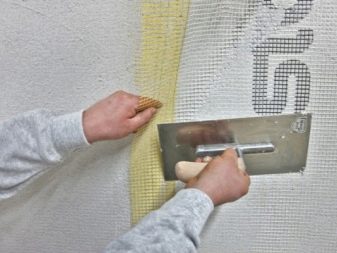
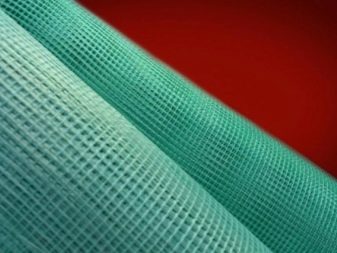
In addition, the amount of primer used during work is quite high due to the good absorbency of the coating.
However, if the emphasis is placed on quality, safety and practicality during finishing work, this material cannot be dispensed with.
See below about the features of working with fiberglass plaster mesh.













The comment was sent successfully.